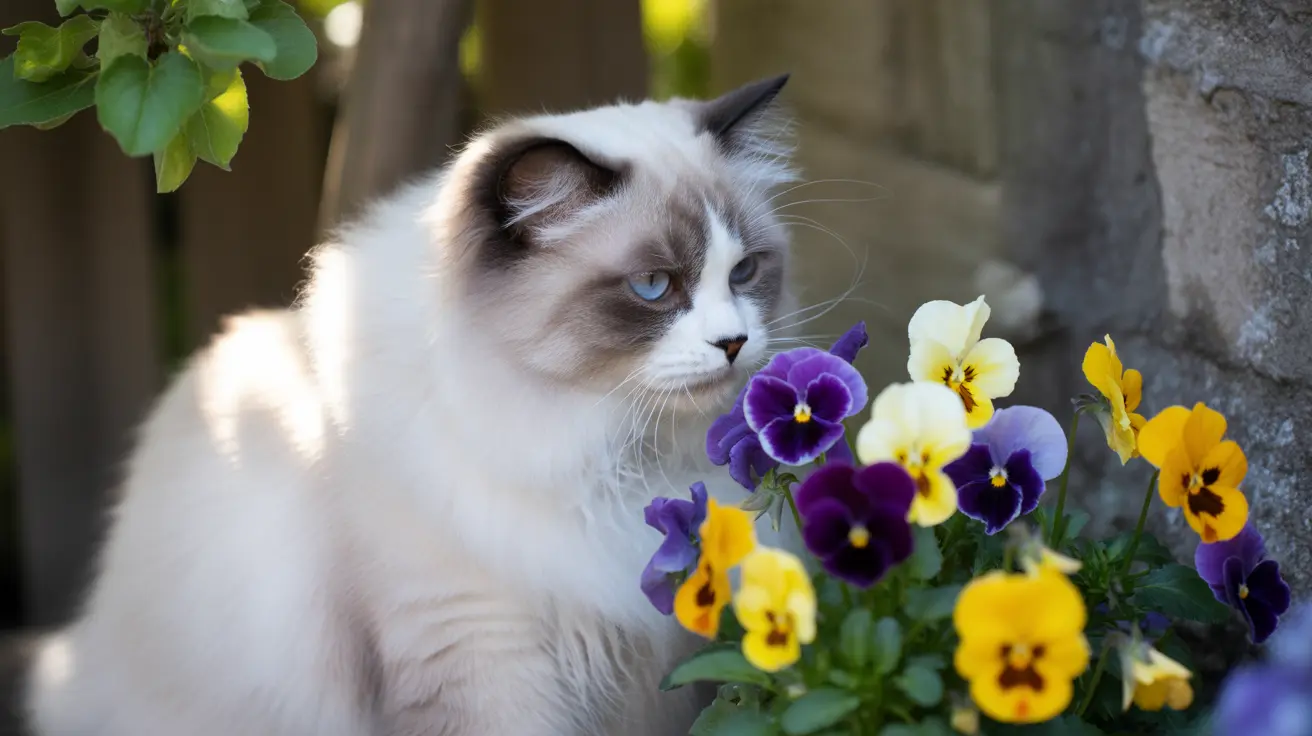As a cat owner, it's crucial to know which plants are safe to keep around your feline friend. Pansies are a popular garden flower, and many pet parents wonder about their safety. Let's explore the facts about pansies and cats, backed by veterinary sources and expert research.
The good news is that pansies are generally considered non-toxic to cats according to the ASPCA and other authoritative veterinary sources. However, this doesn't mean cats should freely feast on these colorful blooms. While not poisonous, ingestion can still lead to mild digestive issues in some cases.
Understanding Pansy Safety for Cats
When it comes to pansies and cats, the consensus from veterinary experts is clear: these flowers are not considered toxic in the way that truly dangerous plants like lilies are. However, as with any non-food item, eating pansies isn't recommended and could cause minor issues.
While pansies won't cause severe poisoning, cats' digestive systems aren't designed to process large amounts of plant matter. This means that even safe plants can cause temporary discomfort if consumed.
Potential Symptoms After Pansy Ingestion
If your cat nibbles on pansies, they might experience:
- Mild stomach upset
- Temporary vomiting
- Brief episodes of diarrhea
- Reduced appetite
- Temporary lethargy
These symptoms typically resolve within 24-48 hours without intervention. However, if symptoms persist or worsen, it's important to consult your veterinarian.
Safe Plant Alternatives vs. Dangerous Plants
While pansies are generally safe, it's important to know which plants pose real dangers to cats. Here are some cat-friendly alternatives to keep in your garden:
- Roses
- Sunflowers
- Gerberas
- Snapdragons
- African violets
- Orchids
In contrast, these plants are highly toxic and should be avoided:
- Lilies (all varieties)
- Tulips
- Azaleas
- Daffodils
- Ivy
- Philodendron
Prevention and Plant Safety Tips
To keep your cat safe around pansies and other plants:
- Place plants in areas cats can't easily access
- Use pet-safe deterrent sprays
- Provide cat grass as a safe alternative
- Create engaging environments with toys and scratching posts
- Monitor outdoor areas for toxic plants
- Remove any damaged or fallen leaves promptly
Frequently Asked Questions
Are pansies safe for cats to eat or sniff around the house?
While pansies are non-toxic to cats, they shouldn't be encouraged to eat them. Sniffing is generally safe, but ingestion could cause mild stomach upset. It's best to keep pansies in areas where cats can't easily access them.
What symptoms might my cat show if it eats pansies?
Cats may show mild gastrointestinal symptoms like temporary vomiting, diarrhea, or decreased appetite. These symptoms typically resolve within 24-48 hours.
How should I handle it if my cat has nibbled on pansy flowers or leaves?
Monitor your cat for 24-48 hours for any signs of digestive upset. Ensure they have access to fresh water and their litter box. If symptoms persist beyond 48 hours or become severe, contact your veterinarian.
Are there any truly toxic plants I should avoid if I have cats, compared to pansies?
Yes, several common plants are highly toxic to cats. All lily varieties are extremely dangerous and can cause kidney failure. Other toxic plants include tulips, azaleas, daffodils, and ivy. These should be completely avoided in homes with cats.
What are some effective ways to stop my cat from chewing on pansies or other plants?
Provide cat grass as a safe alternative, use pet-safe deterrent sprays, keep plants out of reach, and ensure your cat has plenty of environmental enrichment through toys and activities. Creating designated plant-free zones for your cat can also help.
Remember, while pansies are considered non-toxic, it's always best to prevent your cat from eating any plants and to contact your veterinarian if you notice concerning symptoms after plant ingestion.






